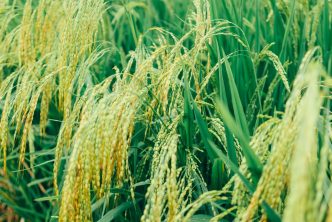Harnessing new Energy Sources
Fossil fuels have been the de facto energy source of the world for a long time, but their exploration leaves behind a polluted world. An alternative like Biomass is a cleaner replacement.
Introduction
Nigeria’s extractive industry is characterized by hyperinflation, high misery index, battered foreign exchange rate, and more recently, the pandemic. Besides the wealth of the extractive industry, agriculture has re-appeared as the mainstay of Nigeria’s economy. Data from the Central Bank of Nigeria (CBN) show that the agricultural sector’s contribution to Nigeria’s GDP rose from 11.77 percent in 1981 to 26.95 percent in 20201. The sector is also renowned for labour utilization, food production for humans, livestock feed, and raw materials for agroindustries. Thus, agriculture can stimulate the broader economic growth, health, and social well-being of the citizens. However, a substantial energy supply is required to realize these potentials.
Energy Deficiency
Energy for Nigeria’s agriculture has come mainly from hydro-power sources and fossil fuels. Access to electricity has been at an all-time low for decades, with poor accessibility to grid power in the rural areas that constitute the hub of Nigeria’s agriculture. Besides, where power is available, high tariffs and erratic supply increase the bottleneck. These tariffs are usually reflective because the cost to the generation and transmission of grid energy in rural areas is expensive3. Nigeria’s inconsistent supply and sporadic price increases of petrol can increase farm variable costs, translate to increased farm products’ prices, and affect mechanized farms and agri-food systems’ profitability.
These problems have precipitated a global paradigm shift towards renewable energy, a low-carbon energy alternative for sustainable economic growth. The adoption of renewable energy for various demands is orchestrated by the necessity to curb global warming and other ecological concerns. Other growth drivers of renewable energy technologies are energy security, economic impacts, and carbon dioxide emission reduction6. Renewable energy, known as bioenergy, can be generated from agricultural residues called Biomass.
Agriculture to the Rescue
Biomass is a biological material derived from living or dead organisms converted to Bioenergy. It most often refers to plants or plant-derived materials.7 Wood remains the largest biomass energy source. Examples include forest residues such as dead trees, branches, tree stumps), yard clippings, wood chips, and even municipal solid waste. Biomass also includes plant or animal matter converted into fibres or other industrial chemicals, including biofuels. Industrial Biomass can be grown from numerous types of plants, including miscanthus, switchgrass, hemp, corn, poplar, willow, sorghum, sugarcane, bamboo, and host tree species, ranging from eucalyptus to oil palm.8,9,10
Crops provide plant energy through produces grown for fuel that offers high biomass yield with low input energy. Grains (e.g., soya beans, corn) can be used for liquid transportation fuels, while their straws are burnt to produce heat or electricity. Plant biomass can also be degraded from cellulose to glucose through a series of chemical treatments, and the resulting sugar becomes biofuel.
Biomass is converted to other usable forms of energy such as methane gas or transportation fuels such as ethanol and biodiesel from fermented corn and sugarcane. Biodiesel, another transportation fuel, can be produced from leftover food products such as vegetable oils and animal fats.
Biofuels include solid, liquid, and gaseous fuels, which are derived from biomass14. Liquid biofuels include bio-alcohols, such as bioethanol and oils. Gaseous biofuels include biogas, landfill gas, and synthetic gas. Bioethanol is an alcohol made by fermenting the sugar components of plant materials, and it is made mainly from sugar and starch crops. These include maize, sugarcane, and, more recently, sweet sorghum.15,14
The benefit of choosing Biomass as an alternative energy source is seen in biodiesel from vegetable oils used as fuel for vehicles in its pure form. It is also commonly used as a diesel additive to reduce particulates, carbon monoxide, and hydrocarbons from diesel-powered vehicles. Reports show that millions of people use biogas made in household-scale digesters for lighting and cooking at the household level. Others rely on a new generation of more efficient biomass cookstoves. Clean liquid fuel sourced from renewable feedstock is used for cooking and lighting in energy-poor areas of developing countries.16
Beyond the household level, renewable energy systems are used to power farm operations such as photovoltaic water pumps and electricity, greenhouse technologies, solar dryers for post-harvest processing, and solar water heaters. Hence, using renewable energy technologies for agricultural production means that farmers can undertake more value-added activities (grinding, milling, drying, storage). This can also lead to access to water through the use of solar pumps for irrigation and clean drinking water18 as well as the water supply for livestock, drainage, salt ponds, and fish farms17.
Why this makes sense?
Renewable energy contributes to providing heat and power for food preservation (drying, chilling, and freezing)18. This can minimize post-harvest losses in the processes of gathering, transporting, and selling at markets. The food production chain necessitates applying renewable energy technologies to better process agricultural products, translating to more substantial domestic enterprises.
Also, photovoltaic-driven machinery (grinder, mills, mechanical /electrical water pumps) can run processing units for crops, fruits and spices, refrigeration, ice making, cold storage, and drying.18 Other applications of photovoltaic systems on farms, ranches, and orchards include power for feed or grinding of the produce, electric-powered egg collection and handling equipment, product refrigeration, livestock feeder and sprayer motors and controls, compressors and pumps for fish farming, electric fencing to contain livestock and battery re-charging.17
In response to increasing global food demand, agricultural food production systems and raw food products’ processing into consumer products are of great importance. The use of renewable energy to drive the processes can reverse greenhouse gas’s high production level by the agri-food production and processing sector.19 In rural areas, where no electricity grid connection exists, stand-alone mini-grid infrastructures can boost local economic development due to more intensive agricultural and food processing activities.19
Challenges with Energy from Agriculture
Although the adoption of renewable energy is invaluable, there are challenges. One of them is the low level of awareness among people, which can slow down the adoption of renewable energy technologies. Similarly, landowners and the government could split their overland for the installation of renewable energy infrastructures in local communities.17,20
Secondly, the installation cost can be unaffordable for individual farmers.17 Renewable energy comes with the high initial capital cost of installation.21 Economic considerations in this regard are due to the low-income base of rural farmers and their dependence on subsistence farming.22 Consequently, it is difficult for the farmers to procure, service, and maintain renewable energy infrastructure for small-scale agricultural operations.
Thirdly, lack of commitment to national energy policy in Nigeria constitutes a noteworthy hindrance. For instance, the establishment of the renewable policy has improved the funding of critical infrastructure required for its full implementation. The reason could be that since the current economic systems are based on fossil-fuel energy, the transition from fossil fuel dependence to renewable energy will involve massive restructuring and new investment.23
Fourthly, there are related challenges of estimating renewable potentials, establishing energy demand, and the amount of energy required to meet that demand. The task is complicated for developing countries with less connected markets and demand inefficiency, determining the deployment of specific renewable energy technologies.24
Lastly, the spare parts for renewable energy technologies are scarce. Since the adoption of renewable energy is not widespread, spare parts are hard to come by. This is because the attention of investors has not been stimulated yet. The alternative, which is to import, would substantially drain foreign exchange.
The way forward
To redirect the attention of government and development partners towards renewable energy-agriculture nexus,
- A deliberate renewable energy campaign and an assessment of willingness to pay for bioenergy should be commissioned. The process will create awareness that will spur the adoption of the new energy alternative.
- The federal government and development partners should subsidize renewable energy infrastructure for small and medium agro-enterprises, especially in food storage and processing. This will also encourage adoption and consequently enhance the contribution of agriculture to the country’s GDP.
- The cost of basic renewable energy resources infrastructure should be established. This will showcase the investment potential in that sector and attract foreign aids and investment.
- A comprehensive assessment of renewable energy demand for farm operations, affordability, and reliability, especially in remote off-grid areas of Nigeria, should be commissioned. Bridging the gap will lead to increased productivity and health benefits;
- Efficient and safe operation and undertaking repairs and maintenance of renewable energy devices and equipment require skilled labour. Hence, capacity building should be undertaken to guarantee sustainability and long-term success of renewable energy adoption;
- An investment assessment to improve renewable energy technology, its affordability, reliability. This will create awareness, stimulate demand, guarantee the safety of investment and ensure adequate return on investment from renewable energy;
- Renewable energy supply options for the agri-food value chain should be conducted on a massive scale. This will eventually lead to minimal greenhouse emission and improve the health status of people who live within the vicinity of agro-processing factories; and
- There is a need to establish more waste-to-energy plants in the country to bridge the country’s energy gap, which has economic benefits.
DR.E.C. OGBANJE has a Ph.D. in Agricultural Economics with a specialtyinAgricultural Finance and Project Analysis and is a Senior Lecturer at the Department of Agribusiness of the Federal University of Agriculture, Makurdi, Benue State.







